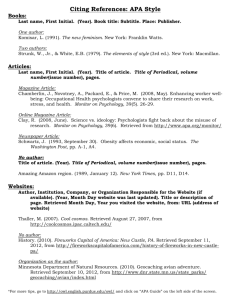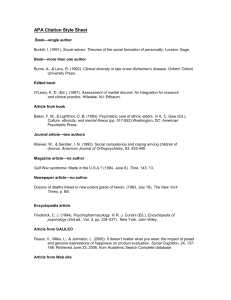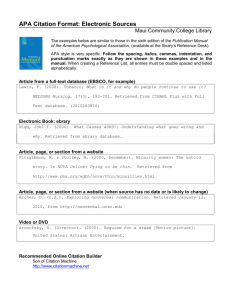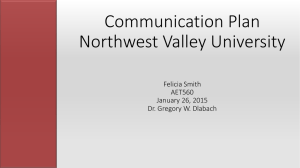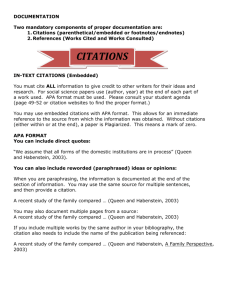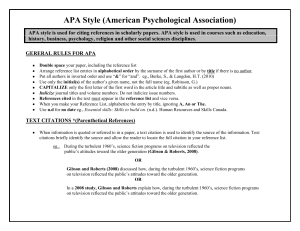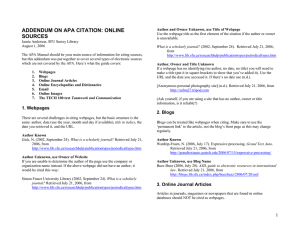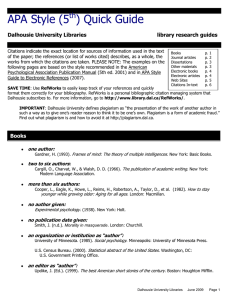Citing Electronic Sources: APA
advertisement
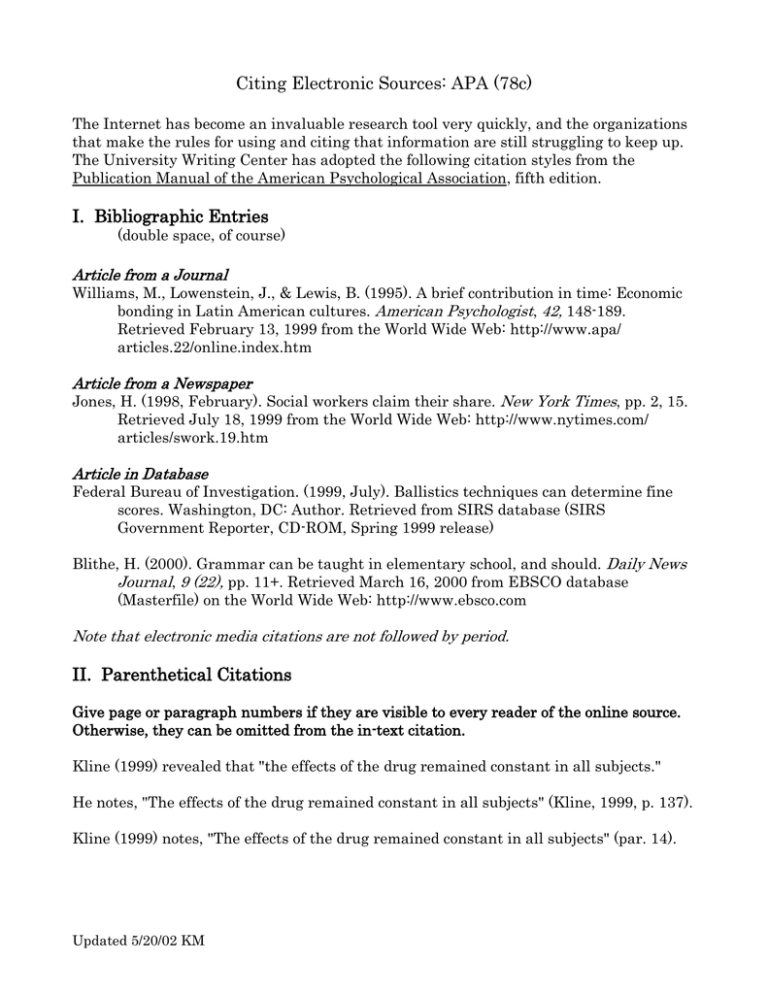
Citing Electronic Sources: APA (78c) The Internet has become an invaluable research tool very quickly, and the organizations that make the rules for using and citing that information are still struggling to keep up. The University Writing Center has adopted the following citation styles from the Publication Manual of the American Psychological Association, fifth edition. I. Bibliographic Entries (double space, of course) Article from a Journal Williams, M., Lowenstein, J., & Lewis, B. (1995). A brief contribution in time: Economic bonding in Latin American cultures. American Psychologist, 42, 148-189. Retrieved February 13, 1999 from the World Wide Web: http://www.apa/ articles.22/online.index.htm Article from a Newspaper Jones, H. (1998, February). Social workers claim their share. New York Times, pp. 2, 15. Retrieved July 18, 1999 from the World Wide Web: http://www.nytimes.com/ articles/swork.19.htm Article in Database Federal Bureau of Investigation. (1999, July). Ballistics techniques can determine fine scores. Washington, DC: Author. Retrieved from SIRS database (SIRS Government Reporter, CD-ROM, Spring 1999 release) Blithe, H. (2000). Grammar can be taught in elementary school, and should. Daily News Journal, 9 (22), pp. 11+. Retrieved March 16, 2000 from EBSCO database (Masterfile) on the World Wide Web: http://www.ebsco.com Note that electronic media citations are not followed by period. II. Parenthetical Citations Give page or paragraph numbers if they are visible to every reader of the online source. Otherwise, they can be omitted from the in-text citation. Kline (1999) revealed that "the effects of the drug remained constant in all subjects." He notes, "The effects of the drug remained constant in all subjects" (Kline, 1999, p. 137). Kline (1999) notes, "The effects of the drug remained constant in all subjects" (par. 14). Updated 5/20/02 KM


